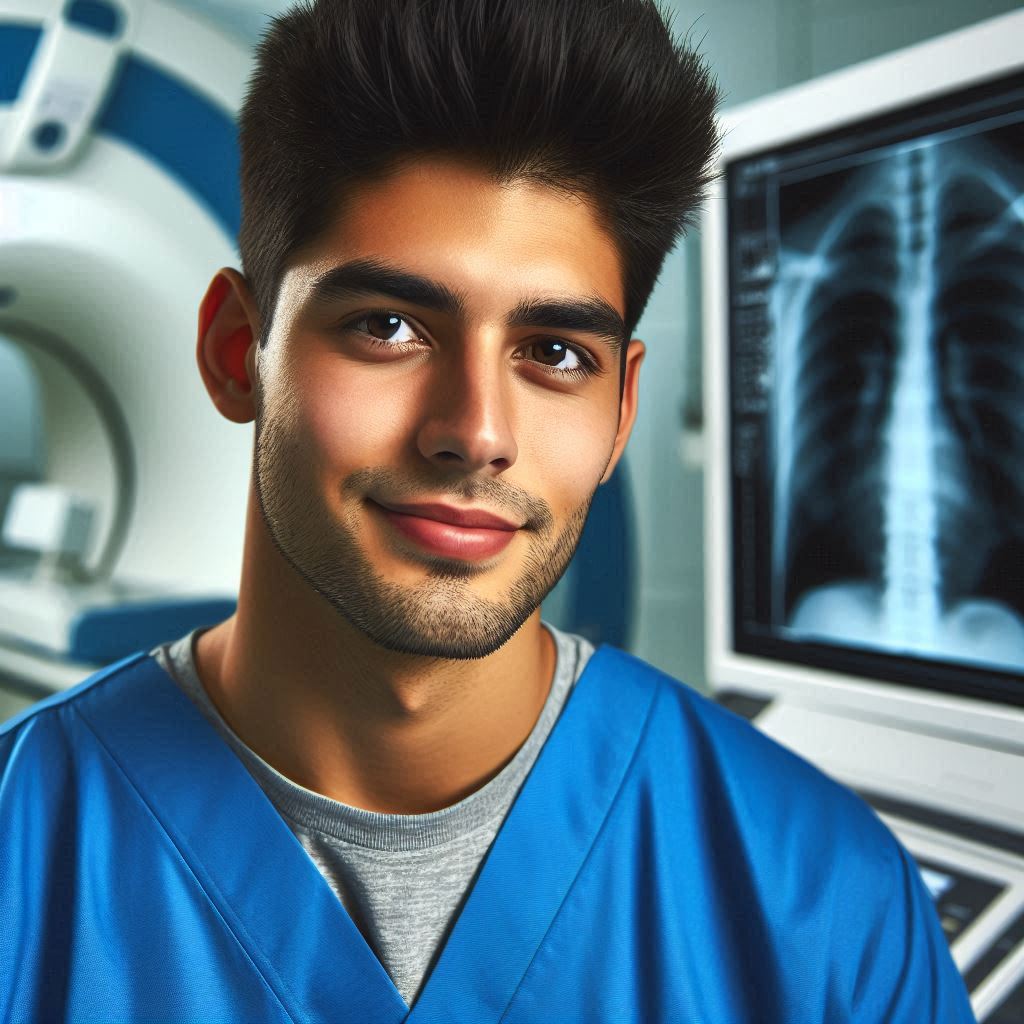Introduction
Radiologic technologist programs train students in medical imaging techniques.
These techniques include X-rays, MRI, and CT scans. Choosing the best school is crucial for a successful career in radiologic technology.
Top programs offer cutting-edge equipment and experienced faculty. They provide comprehensive coursework and hands-on clinical training.
Accreditation ensures high educational standards. Graduates from accredited programs are more competitive in the job market.
The right school can significantly impact your career trajectory. Prestigious programs often have strong industry connections.
These connections can lead to better internship opportunities. Networking with professionals during your studies is invaluable.
It opens doors to future job prospects. Schools with robust support services help students succeed.
They offer career counseling, job placement assistance, and exam preparation.
Quality education prepares you for certification exams. Passing these exams is essential for licensure.
Licensure increases your employment opportunities. Employers prefer hiring certified radiologic technologists.
Certification demonstrates your expertise and commitment. Choosing a reputable school also enhances your resume.
It shows potential employers you received top-notch training.
In summary, selecting the best radiologic technologist program is vital. It affects your education quality and career success.
Research thoroughly before making your decision. Consider factors like accreditation, faculty, and support services.
Prioritize schools with strong industry ties and clinical training. Investing in the right education sets the foundation for a rewarding career in radiologic technology.
Accreditation
Importance of selecting a school that is accredited by the Joint Review Committee on Education in Radiologic Technology (JRCERT)
Choosing a school accredited by the Joint Review Committee on Education in Radiologic Technology (JRCERT) is crucial.
This ensures that the program meets high standards of quality and excellence.
List of Accredited Schools
- University of California – Los Angeles (UCLA): UCLA offers a top-tier radiologic technologist program that is JRCERT accredited.
Students benefit from state-of-the-art facilities and experienced faculty. - Johns Hopkins University: Known for its prestigious medical programs, Johns Hopkins University has an accredited radiologic technologist program that provides students with hands-on training and clinical experience.
- University of North Carolina – Chapel Hill: UNC-Chapel Hill’s radiologic technologist program is accredited by JRCERT and offers a comprehensive curriculum that prepares students for successful careers in the field.
- Mayo Clinic School of Health Sciences: With a focus on patient-centered care, Mayo Clinic’s radiologic technologist program is JRCERT accredited and provides students with the knowledge and skills needed to excel in the profession.
- Ohio State University: Ohio State University offers an accredited radiologic technologist program that combines classroom instruction with hands-on clinical practice, giving students a well-rounded education in the field.
When selecting a school for a radiologic technologist program, it is important to prioritize accreditation by JRCERT.
This ensures that the program meets national standards and prepares students for successful careers in the field.
Read: Radiologic Technologist vs. Radiologist: Key Differences
Transform Your Career Today
Unlock a personalized career strategy that drives real results. Get tailored advice and a roadmap designed just for you.
Start NowCurriculum
Key components of a strong radiologic technologist program curriculum
- Emphasize hands-on training in radiographic procedures, patient care, and medical imaging technology.
- Include courses in anatomy, physiology, radiographic positioning, pathology, and radiation protection.
- Provide clinical rotations in various medical settings to gain practical experience.
- Incorporate training in advanced imaging techniques such as MRI, CT scans, and ultrasound.
- Offer coursework in radiation safety, patient communication, and professional ethics.
Comparison of Top Schools
- Johns Hopkins University offers a comprehensive curriculum with a focus on advanced imaging technologies.
- Mayo Clinic College of Medicine and Science emphasizes a strong foundation in radiographic procedures and patient care.
- Cleveland Clinic School of Diagnostic Imaging provides extensive clinical rotations in diverse medical settings.
- Emory University integrates coursework in radiation safety and patient communication skills.
- University of California, San Francisco (UCSF) offers opportunities for specialization in MRI, CT scans, or mammography.
Clinical Training
Significance of hands-on clinical training in preparing students for real-world work in radiologic technology
Hands-on clinical training is crucial for aspiring radiologic technologists. It bridges classroom learning with real-world application.
Students gain practical skills, confidence, and experience in handling radiologic equipment and interacting with patients.
Clinical training prepares students for the dynamic nature of the job. It ensures they are ready to tackle various scenarios they will encounter in their careers.
Schools that offer robust clinical training programs provide students with a significant advantage.
They partner with hospitals, clinics, and imaging centers to offer diverse training environments.
This exposure helps students adapt to different settings and patient needs.
It also allows them to work with advanced technology and learn from experienced professionals.
Clinical training opportunities offered by different schools
Evaluating clinical training opportunities at different schools is essential. Prospective students should research the types of clinical settings available.
They should look for programs that offer rotations in various specialties, such as MRI, CT scans, and interventional radiology.
This variety ensures comprehensive training and a broader skill set. The duration and frequency of clinical rotations also matter.
Programs that integrate clinical training early and throughout the curriculum provide better learning experiences.
Regular hands-on practice reinforces theoretical knowledge and hones technical skills.
Accreditation is another critical factor. Accredited programs meet high standards for clinical education.
They ensure students receive quality training and are well-prepared for certification exams.
Accreditation also reflects the program‘s commitment to continuous improvement and excellence in education.
Feedback from current and former students can offer valuable insights.
Prospective students should seek reviews and testimonials about the clinical training experiences.
Positive feedback about supportive clinical instructors and well-organized rotations can indicate a strong program.
In essence, hands-on clinical training is vital in radiologic technology education. It equips students with the skills and confidence needed for their careers.
Evaluating the quality and scope of clinical training opportunities at different schools is crucial for making an informed decision.
Transform Your Career Today
Unlock a personalized career strategy that drives real results. Get tailored advice and a roadmap designed just for you.
Start NowRead: Radiologic Technologist Professional Development
Faculty
Faculty plays a crucial role in shaping the educational experience for students pursuing radiologic technologist programs.
Let’s delve into the importance of faculty credentials and experience at the top schools in this field.
Credentials of Faculty Members
Faculty members at the best schools for radiologic technologist programs typically possess impressive credentials.
They often hold advanced degrees in radiologic technology, medical imaging, or related fields.
Many faculty members also have certifications from professional organizations such as the American Registry of Radiologic Technologists (ARRT).
Experience of Faculty Members
In addition to their academic qualifications, faculty members at top schools have extensive experience in the field of radiologic technology.
Some faculty members may have worked as radiologic technologists themselves, bringing real-world expertise to the classroom.
Others may have experience in research or clinical settings, giving them a broad perspective on the industry.
Benefits of Knowledgeable Faculty
Knowledgeable faculty members can significantly enhance the learning experience for students in radiologic technologist programs.
Their expertise allows them to provide up-to-date information on industry trends, technological advancements, and best practices in the field.
This ensures that students receive relevant and practical training that prepares them for successful careers as radiologic technologists.
Dedication of Faculty Members
Dedicated faculty members are committed to supporting the academic and professional growth of their students.
They go above and beyond to provide mentorship, guidance, and personalized instruction to help students succeed.
Their passion for teaching and radiologic technology motivates students to excel and pursue excellence in their studies.
Faculty-Student Interaction
One of the key advantages of having knowledgeable and dedicated faculty members is the quality of interaction between faculty and students.
In small class sizes, faculty can provide individualized attention to students, address their questions and concerns, and offer support when needed.
This personal connection fosters a collaborative learning environment where students feel valued and empowered to succeed.
Professional Development Opportunities
Faculty members at top schools for radiologic technologist programs often engage in ongoing professional development to stay current with industry standards and best practices.
This ensures that they can deliver high-quality instruction that meets the evolving needs of the field.
Transform Your Career Today
Unlock a personalized career strategy that drives real results. Get tailored advice and a roadmap designed just for you.
Start NowFaculty who participate in conferences, workshops, and continuing education courses bring fresh insights and expertise to the classroom, benefitting students through exposure to the latest advancements in radiologic technology.
Research and Publications
Some faculty members at leading radiologic technologist programs are actively involved in research and scholarly activities.
They may publish articles in peer-reviewed journals, present at conferences, or collaborate on research projects with industry partners.
Engaging in research allows faculty to bring cutting-edge knowledge and evidence-based practices to the classroom, enriching the educational experience for students and fostering a culture of innovation and discovery.
In fact, the faculty is a critical component of the learning environment in radiologic technologist programs.
With their impressive credentials, extensive experience, dedication to teaching, and commitment to professional development, faculty members at the best schools empower students to excel in their studies, gain practical skills, and prepare for successful careers in radiologic technology.
By choosing a school with knowledgeable and dedicated faculty, students can maximize their learning potential and achieve their academic and professional goals in this dynamic and rewarding field.
Read: Radiologic Technologist Salary Overview

Facilities and Equipment
Importance of schools having state-of-the-art facilities and equipment for radiologic technologist programs
State-of-the-art facilities and equipment are crucial for radiologic technologist programs. Advanced tools allow students to gain hands-on experience.
They prepare students for real-world scenarios. Modern labs simulate clinical environments, enhancing learning.
Schools with cutting-edge equipment stand out. They attract students seeking the best training.
These schools often have higher job placement rates. Employers prefer graduates who trained with the latest technology.
For example, some schools boast digital radiography systems. Others might have older, less efficient machines.
Digital systems provide clearer images and faster results. They also expose students to industry-standard practices.
MRI and CT scanners are vital in radiologic technologist training. Schools with multiple scanners offer diverse learning opportunities.
Students can practice with different machines, gaining versatile skills. This variety enhances their adaptability in clinical settings.
Sonography equipment is another key resource. Schools with modern ultrasound machines better prepare students.
These machines offer superior image quality and advanced features. Training on them ensures students are ready for current job demands.
Radiation therapy equipment is also important. Schools with up-to-date linear accelerators provide top-notch education.
Students learn on the same machines they’ll use professionally. This seamless transition boosts their confidence and competence.
Transform Your Career Today
Unlock a personalized career strategy that drives real results. Get tailored advice and a roadmap designed just for you.
Start NowComparing the resources available at various schools to support student learning and skill development
Comparing resources at various schools reveals stark differences. Some schools invest heavily in new technology.
Others may lag due to budget constraints. Prospective students should consider these factors when choosing a program.
For instance, School A might have the latest MRI scanner. School B could have an older model. School A’s students gain a competitive edge.
They graduate with experience on the latest equipment.
Ultimately, facilities and equipment significantly impact radiologic technologist training. They shape students’ skills and readiness for the workforce.
Schools with advanced resources produce well-prepared graduates. These graduates are more attractive to employers, enhancing their career prospects.
Read: Radiologic Technologist Scholarships and Grants
Student Support Services
When it comes to choosing the best school for a Radiologic Technologist program, one of the essential factors to consider is the availability of student support services.
These services play a crucial role in ensuring that students have the resources and assistance they need to succeed in their academic and professional endeavors.
Importance of Student Support Services
Student support services, such as academic advising, career counseling, and tutoring, are vital components of a successful radiologic technologist program.
These services help students navigate their academic journey and prepare them for a successful career in the field of radiology.
Academic Advising
Most top schools for radiologic technologist programs offer academic advising services to help students plan their course schedules, track their progress, and make informed decisions about their academic and career goals.
Academic advisors provide valuable guidance and support to students throughout their program.
Career Counseling
Another essential student support service offered by many top schools is career counseling.
Career counselors help students explore potential career paths in radiologic technology, develop job search strategies, and prepare for interviews.
They also provide valuable insight into the job market and industry trends.
Tutoring Services
Many students in radiologic technologist programs may face academic challenges and require additional support to succeed in their coursework.
Top schools often provide tutoring services to help students improve their academic performance and grasp complex concepts.
Tutors offer personalized assistance and guidance to help students meet their academic goals.
Creating a Supportive Environment
Having access to student support services can significantly impact a student’s success in a radiologic technologist program.
Transform Your Career Today
Unlock a personalized career strategy that drives real results. Get tailored advice and a roadmap designed just for you.
Start NowA supportive environment fosters student engagement, motivation, and academic achievement.
It also helps students feel valued, respected, and empowered to reach their full potential.
Personalized Attention
One of the key benefits of student support services is the personalized attention that students receive from academic advisors, career counselors, and tutors.
This individualized support ensures that students’ unique needs and challenges are addressed, leading to improved academic performance and overall success.
Guidance and Mentorship
Student support services also provide valuable guidance and mentorship to help students navigate the complexities of their academic and professional journey.
Mentors offer advice, encouragement, and practical tools to help students overcome obstacles, set goals, and make informed decisions about their future.
Community and Collaboration
Student support services create a sense of community and collaboration among students, faculty, and staff.
By fostering relationships and connections, students can build a support network that encourages teamwork, communication, and mutual assistance.
This collaborative environment enhances the learning experience and promotes student success.
In general, student support services are essential components of top schools for radiologic technologist programs.
These services help students navigate their academic and professional journey, provide valuable guidance and mentorship, and create a supportive environment for success.
By offering academic advising, career counseling, and tutoring, top schools ensure that students have the resources and assistance they need to excel in their studies and future careers.
Alumni Success
Successes of alumni from top schools for radiologic technologist programs
Graduates from top radiologic technologist programs achieve remarkable success. They often secure prestigious positions in leading healthcare facilities.
Many alumni receive accolades for their contributions to medical imaging and patient care.
For example, graduates from Johns Hopkins University are recognized for their advanced imaging techniques.
Alumni from Mayo Clinic College of Medicine and Science frequently lead innovative radiologic research projects.
Success stories from these institutions inspire current students to excel.
How attending a reputable school can enhance job prospects and career advancement opportunities for graduates
Attending a top school significantly boosts job prospects for radiologic technologists.
Reputable programs offer comprehensive training and hands-on experience, making graduates highly skilled.
Employers value degrees from well-known institutions, increasing job placement rates. Graduates from top programs often secure higher starting salaries.
Transform Your Career Today
Unlock a personalized career strategy that drives real results. Get tailored advice and a roadmap designed just for you.
Start NowThey also have access to exclusive job listings and professional networks. Career advancement opportunities are abundant for alumni of prestigious schools.
Many alumni quickly rise to leadership positions within healthcare organizations.
Continuing education and specialized certifications are more accessible to graduates from top schools.
The reputation of the alma mater opens doors to advanced roles and specialized fields.
The success of alumni from top radiologic technologist programs highlights the value of a reputable education.
Graduates achieve professional recognition and secure high-paying jobs.
Attending a top school significantly enhances career prospects and advancement opportunities.
Choose a prestigious program to maximize your potential as a radiologic technologist.
Uncover the Details: Continuing Education for Sleep Technologists
Conclusion
Choosing the best school for radiologic technologist programs is crucial for a successful career.
Top schools offer comprehensive education, hands-on training, and excellent facilities. They also provide strong support systems and networking opportunities.
Graduates from these programs often find better job prospects and career advancement.
When choosing a school, consider accreditation and program reputation. Accredited programs meet industry standards and ensure high-quality education.
Reputation reflects the program’s success in producing competent technologists. Investigate the school’s curriculum and clinical training opportunities.
A well-rounded curriculum covers essential radiologic skills and knowledge. Clinical training provides real-world experience, crucial for skill development.
Research faculty qualifications and student-to-teacher ratios. Experienced faculty and small class sizes enhance learning and personalized attention.
Financial aid options and tuition costs also impact your decision. Explore scholarships, grants, and loan options to manage expenses.
Visit potential schools to get a feel for the campus environment and resources. Talk to current students and faculty to gain insights.
Attend open houses or information sessions for a comprehensive understanding of the program.
Selecting the right school is a pivotal step in your journey as a radiologic technologist. Thorough research and campus visits ensure you make an informed decision.
Transform Your Career Today
Unlock a personalized career strategy that drives real results. Get tailored advice and a roadmap designed just for you.
Start NowPrioritize programs that offer strong education, support, and career opportunities. Your choice will significantly impact your future success in the field.
Make an informed decision to set the foundation for a rewarding radiologic technologist career.




